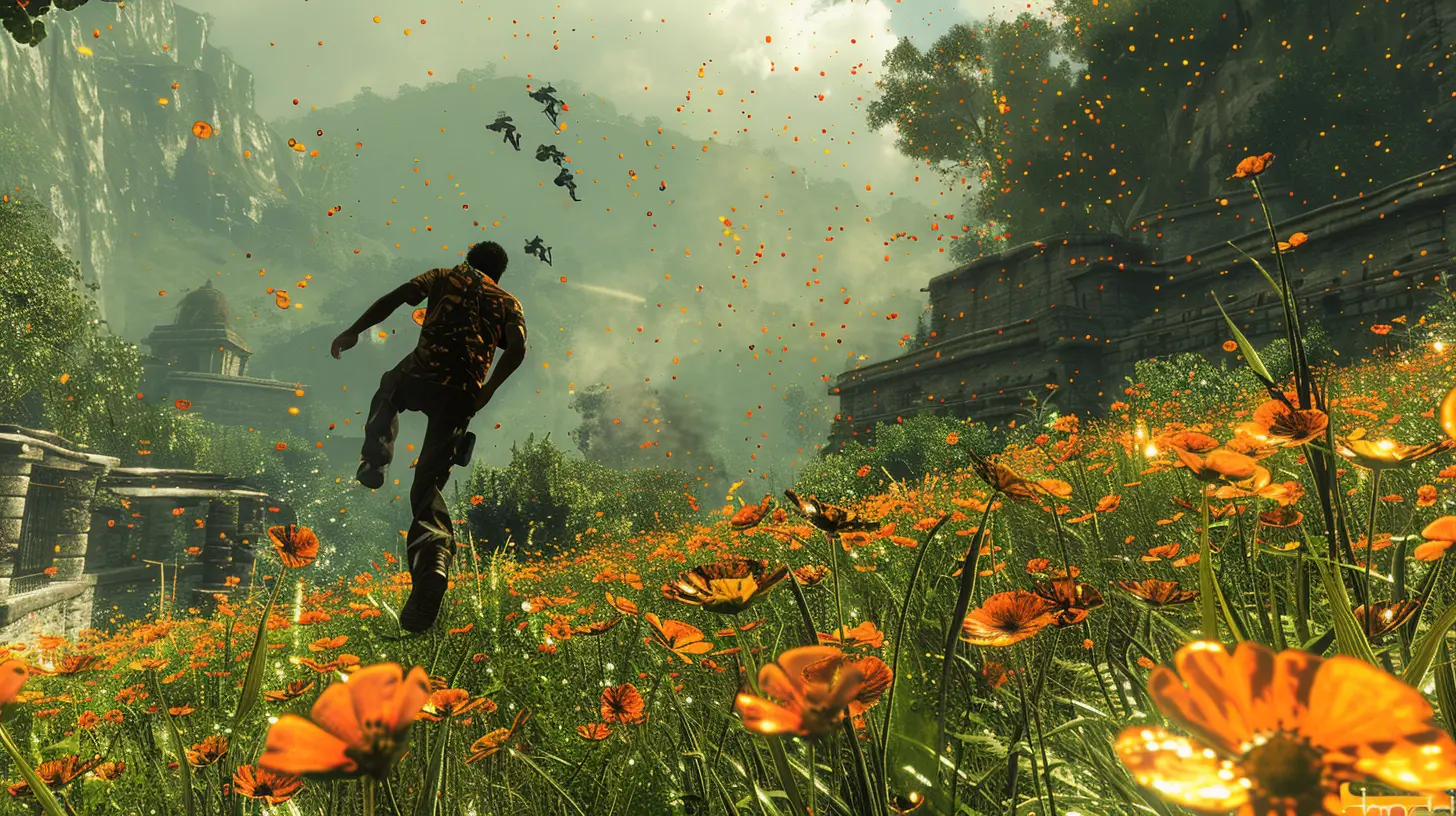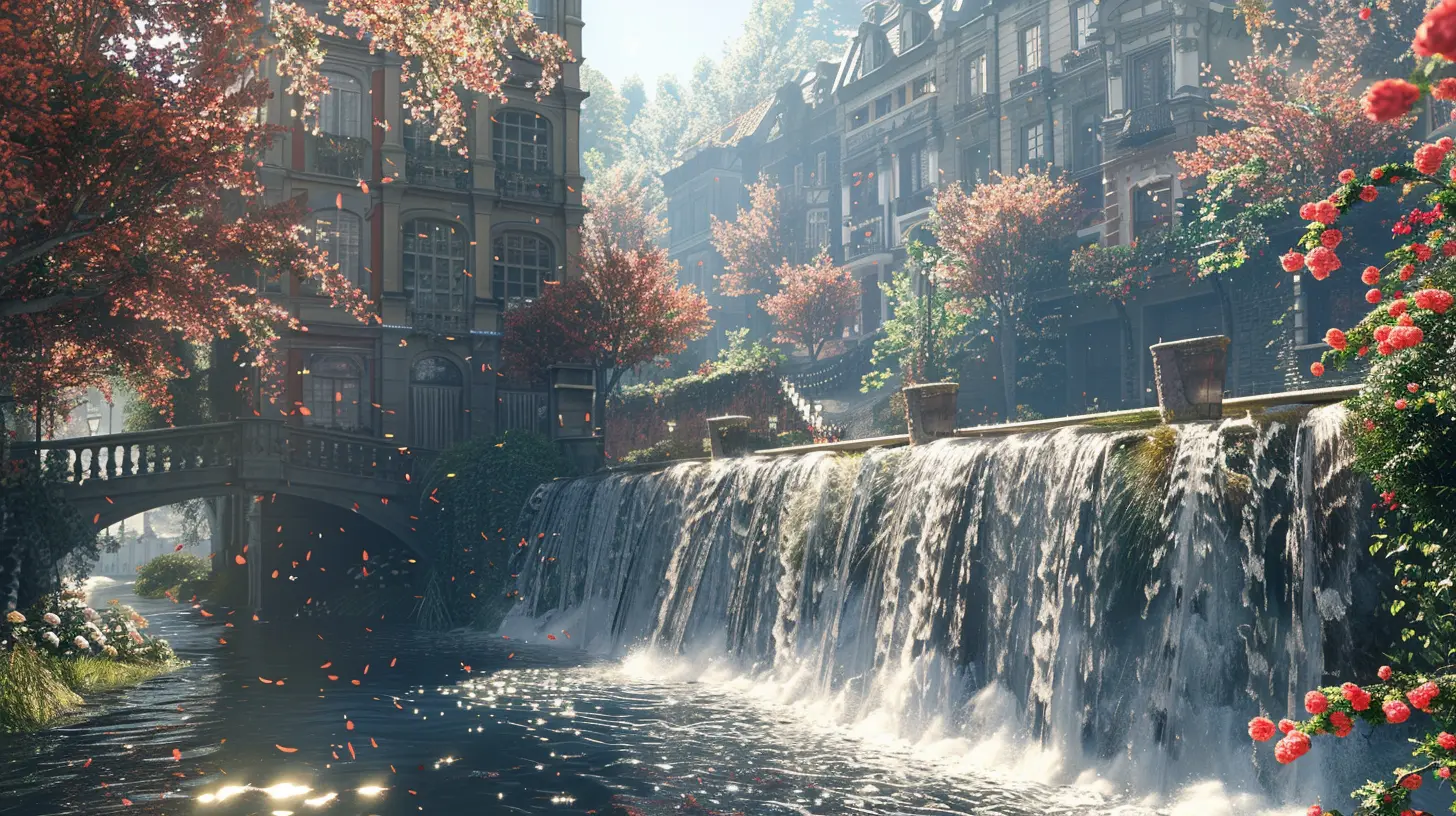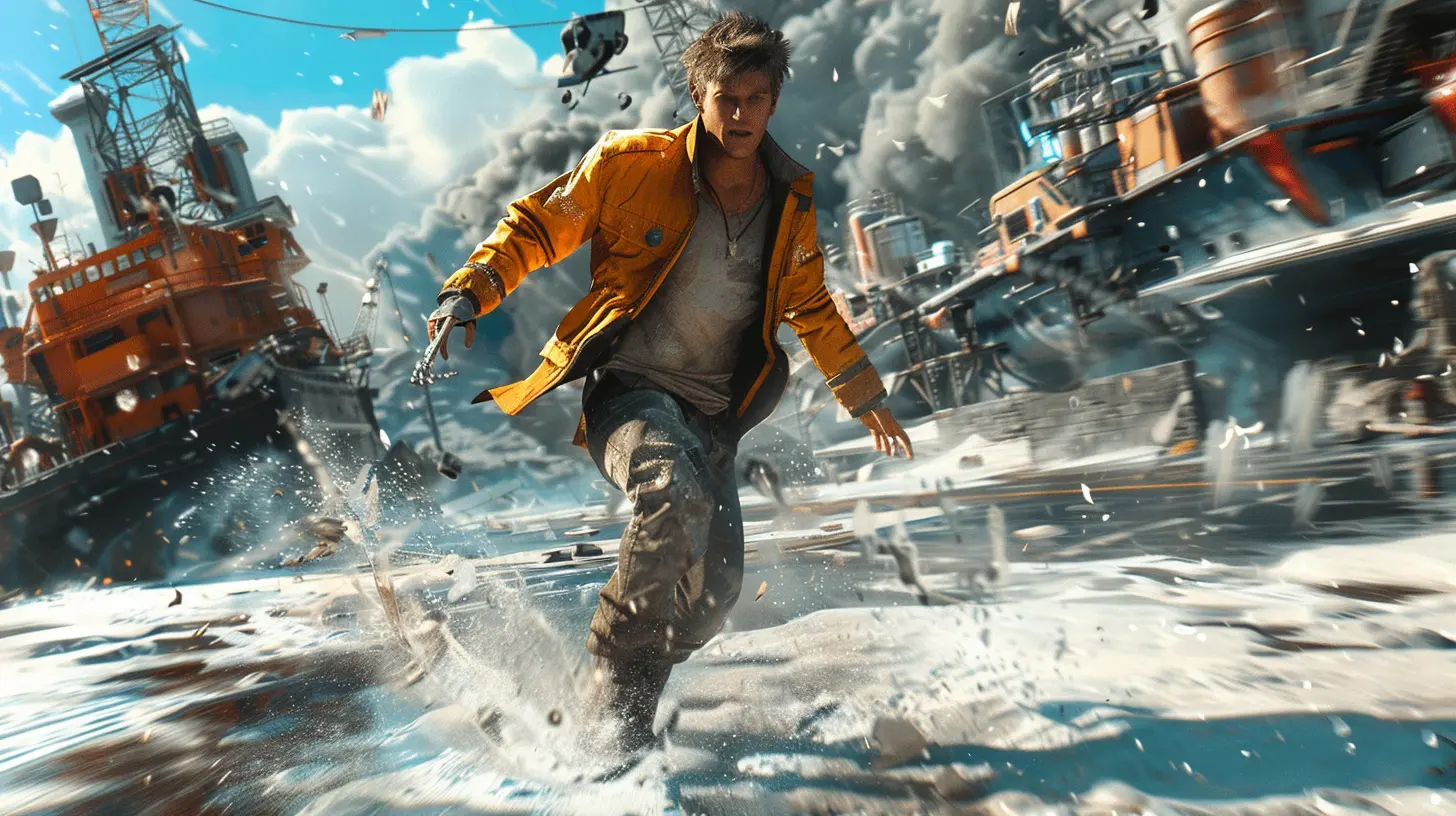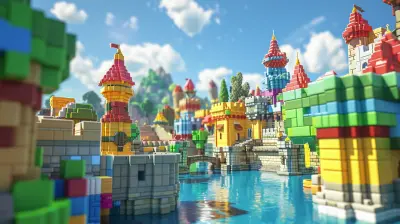The Evolution of Realistic Physics in Modern Games
11 September 2025
Let’s talk about something near and dear to every gamer’s heart—realistic physics in video games. You know, the stuff that makes you go, "Wow, that’s so realistic!" or sometimes, "Wait, why does my horse suddenly think it’s Spider-Man?" Over the years, in-game physics have gone from laughably ridiculous to impressively mind-blowing. It’s been a wild ride, full of falling ragdolls, questionable gravity, and watermelon explosions that would make Isaac Newton shake his head in disbelief. Sit back, grab some popcorn (or a controller), and let’s dive into the evolution of realistic physics in modern games.

Back in My Day, Physics Were Optional
Remember the old-school games where gravity seemed more like a suggestion than a law? I’m talking about the arcade classics, where characters could jump three times their height and then hover awkwardly in mid-air. Physics weren’t exactly a priority back then. Gamers only cared about dodging barrels or getting that high score—nobody was asking, “How fast would that barrel really roll down a slope?”Games like Super Mario Bros. gave us characters that floated as if they lived on a planet with custom gravity. Mario’s jumps were less “Newtonian physics” and more “Disney on Ice.” And we were fine with it. But times changed, and so did our expectations. Suddenly, realism wasn’t just a luxury—it was a demand. We wanted barrels to roll, break, and occasionally explode into splinters. Because why not?

The Ragdoll Revolution: When Falling Became an Art Form
Fast-forward to the late '90s and early 2000s, and the gaming world was hit with a revolutionary idea: ragdoll physics. Oh, yes, the glorious days when characters didn’t just fall—they collapsed. Games like Max Payne and Hitman 2 made death an interpretive dance. Shoot an enemy? Watch them flail around like they just discovered their limbs were detachable.Was it realistic? Absolutely not. Did we love it? Heck yes! Ragdoll physics were the closest thing we had to realism at the time, and they were hilarious. You could spend hours laughing at how a lifeless body would fold over a railing or tumble down the stairs. It was like gaming’s version of slapstick comedy.
Sure, there were some glitches—like when a character’s arm would stretch across the map like some kind of nightmare spaghetti. But hey, nobody’s perfect, right? At least we were moving in the general direction of realism. Baby steps.

The Havok Engine: Physics Gets an Upgrade
Ah, the Havok Physics Engine. For a while, this was the gold standard for in-game physics. If a game was using Havok, you knew it meant business. Why? Because this engine turned boring interactions into chaotic masterpieces. Want to knock over a stack of boxes? Go ahead. Blow up a building? Sure thing. Cause a chain reaction of destruction that derails your entire mission? Absolutely.Games like Half-Life 2 took full advantage of Havok’s capabilities. Remember the gravity gun? The pure joy of picking up a random object and yeeting it at an enemy? That’s Havok doing its thing. And don’t get me started on the barrels. You couldn’t take three steps in Half-Life 2 without running into a barrel, ready to explode at the slightest provocation. It was like a Michael Bay movie, but interactive.
The Havok engine wasn’t just about destruction—although, let’s be honest, the destruction was 90% of the fun. It also gave us more grounded, believable interactions. Objects had weight, momentum, and proper collision detection. For the first time, a ball didn’t just magically roll uphill because the game said so. Progress!

When Physics Met Parkour: The Rise of Movement Mechanics
Physics aren’t just about explosions and falling bodies—they’re also about how characters move through the world. Enter the era of parkour-style movement, where games like Assassin’s Creed and Mirror’s Edge made jumping from rooftops look cool (and more importantly, plausible).Here’s the thing about realistic movement in games: it’s ridiculously hard to get right. Characters need to feel grounded, but not too heavy. Animations need to flow smoothly, but not feel robotic. And for the love of all things holy, they need to grab onto that ledge when I press the jump button. (Looking at you, Ubisoft.)
Physics engines like Euphoria took things to the next level by incorporating dynamic character reactions. In Grand Theft Auto IV, for example, characters responded to impacts and gunshots in ways that felt unsettlingly real. Running into a wall didn’t just stop your momentum—it caused your character to stumble, faceplant, and probably reevaluate some life choices. It was a small detail, but it made the world feel alive. And isn’t that what we’re all chasing?
Destruction 2.0: From Exploding Barrels to Collapsing Buildings
Let’s take a moment to appreciate how far we’ve come in the art of blowing stuff up. Once upon a time, explosions were a simple “BOOM!” and a puff of smoke. Now? Entire buildings crumble, debris scatters, and your poor GPU starts hyperventilating. Games like Battlefield and Red Faction: Guerrilla have made destruction a science.Want to bring down a skyscraper? In Battlefield 4, you actually could (and probably did, because why wouldn’t you?). The beauty of it all was that the destruction wasn’t just for show—it affected the gameplay. Buildings offered cover, vantage points, and occasionally fell on your head if you weren’t paying attention.
It’s not just about the big stuff, either. Even the little details have come a long way. In The Last of Us Part II, glass shatters realistically, wood splinters in satisfying ways, and leaves react to your movements. It’s the kind of attention to detail that makes your jaw drop—or at least gets you posting a 30-second clip on Twitter.
The Weird Physics Era: When Realism Goes Too Far (Or Not Far Enough)
Of course, not every attempt at realistic physics hits the mark. For every game that nails it, there’s one that makes you question the laws of nature. Anyone remember Skyrim’s infamous cheese wheels? Yeah, you could fill an entire room with them and watch as the game’s physics engine absolutely lost its mind. Or how about the FIFA series, where player models sometimes twist into horrifying eldritch monstrosities after a collision? Realism’s a double-edged sword, my friends.And let’s not forget the “horse physics” in games like Red Dead Redemption 2. Sure, the horses moved and behaved realistically… except when they decided to walk straight into a tree. Or when you accidentally rode off a cliff because the physics engine had a minor existential crisis. But hey, nobody’s perfect, not even Rockstar.
The Next Frontier: Where Are We Headed?
So, what’s next for realistic physics in games? The way things are going, I wouldn’t be surprised if future games start simulating molecular interactions just to make raindrops look cooler. Realistic water physics are already a thing—just look at games like Sea of Thieves or Cyberpunk 2077 (say what you want about the bugs, but the puddles were on point).We’re also seeing a big push toward virtual reality, where physics have to be even more immersive. After all, if you’re swinging a virtual sword, it better feel like a sword, not a pool noodle. Developers are focused on creating worlds where every interaction feels natural—or at least natural enough that you don’t throw your VR headset across the room in frustration.
But let’s be honest—no matter how far we go with realistic physics, we’ll always love the goofy stuff. Glitches, ragdoll antics, and accidental chaos are part of what makes gaming so special. At the end of the day, it’s not just about realism—it’s about fun. And if that means occasionally launching a car into orbit because the physics engine hiccuped, so be it. Long live the chaos.
Final Thoughts
There you have it—a not-so-brief (but totally worth it) look at how realistic physics have evolved in modern games. From the hilariously bad to the jaw-droppingly good, we’ve seen it all. And let’s be real—whether we’re watching barrels explode or characters flop around like fish, we wouldn’t have it any other way. Here’s to the future of gaming physics—and to all the ridiculous, glorious chaos it will inevitably bring.all images in this post were generated using AI tools
Category:
Realism In GamesAuthor:

Greyson McVeigh
Discussion
rate this article
1 comments
Sierra Wolfe
From clunky physics to jaw-dropping realism, it’s amazing how far we’ve come! Here’s to all the hilarious ragdoll moments and mind-blowing simulations that keep us gaming with joy!
October 8, 2025 at 4:59 PM

Greyson McVeigh
Absolutely! The evolution of physics in gaming has not only enhanced realism but also added a layer of fun and creativity that keeps players engaged. Cheers to the journey!


